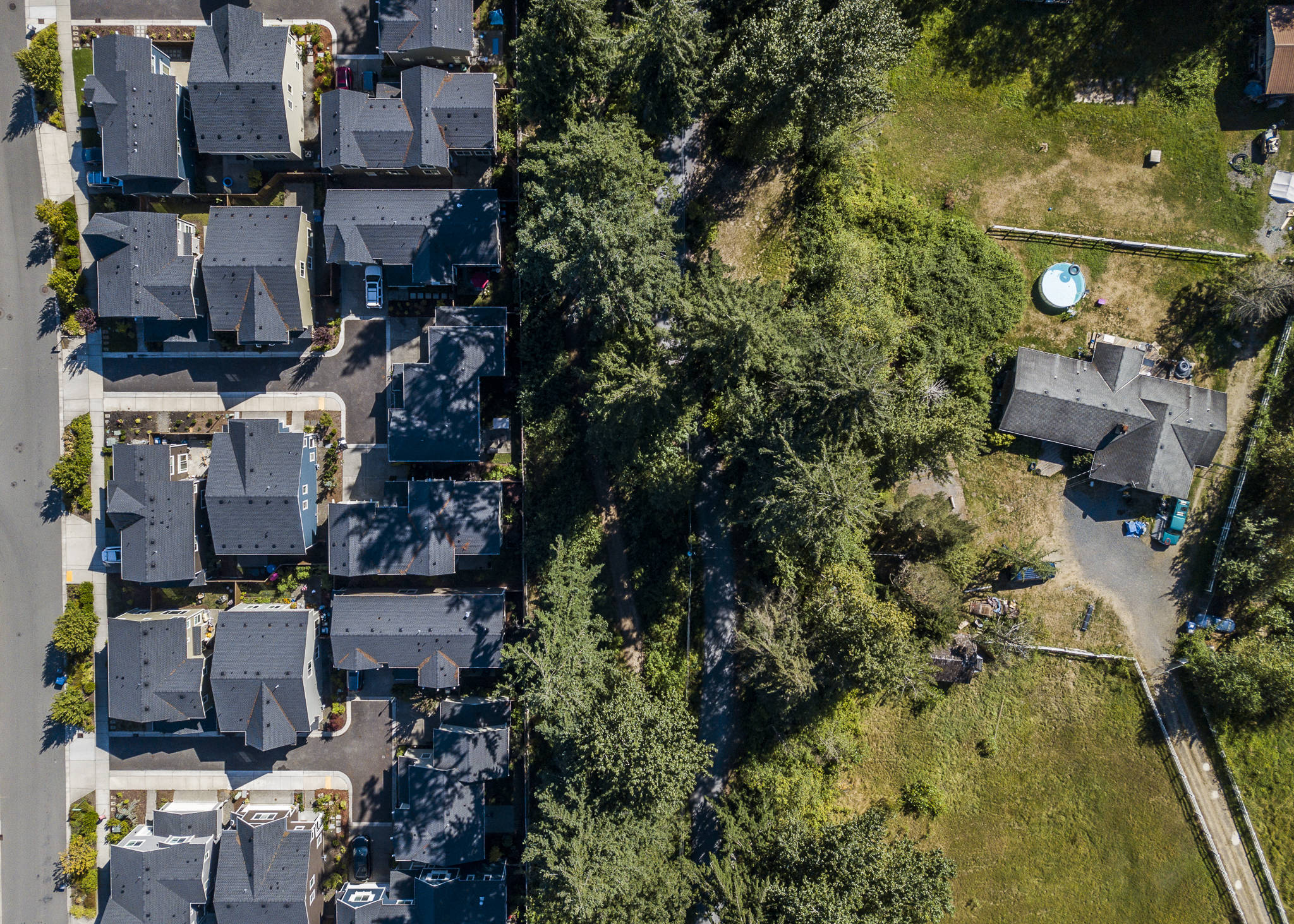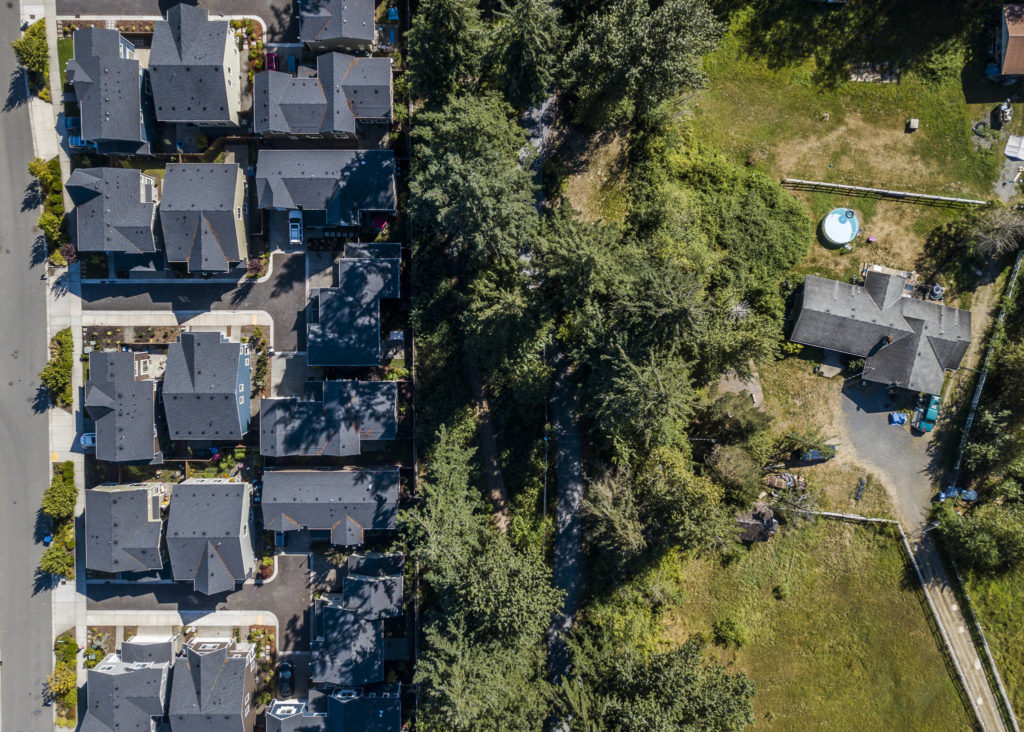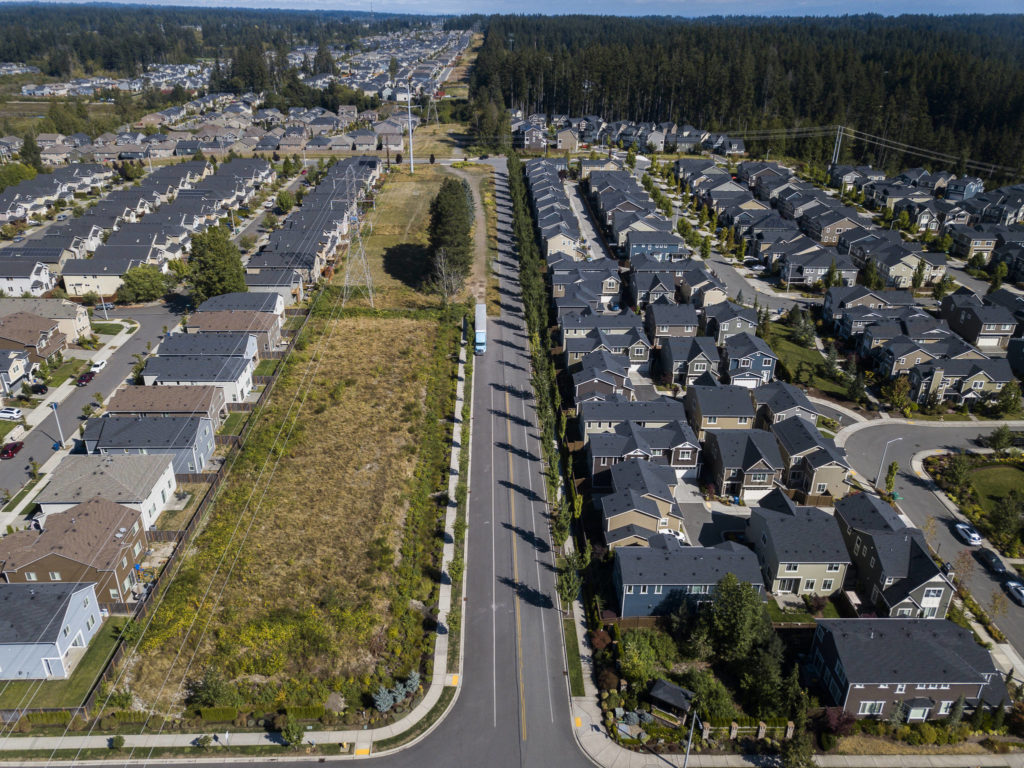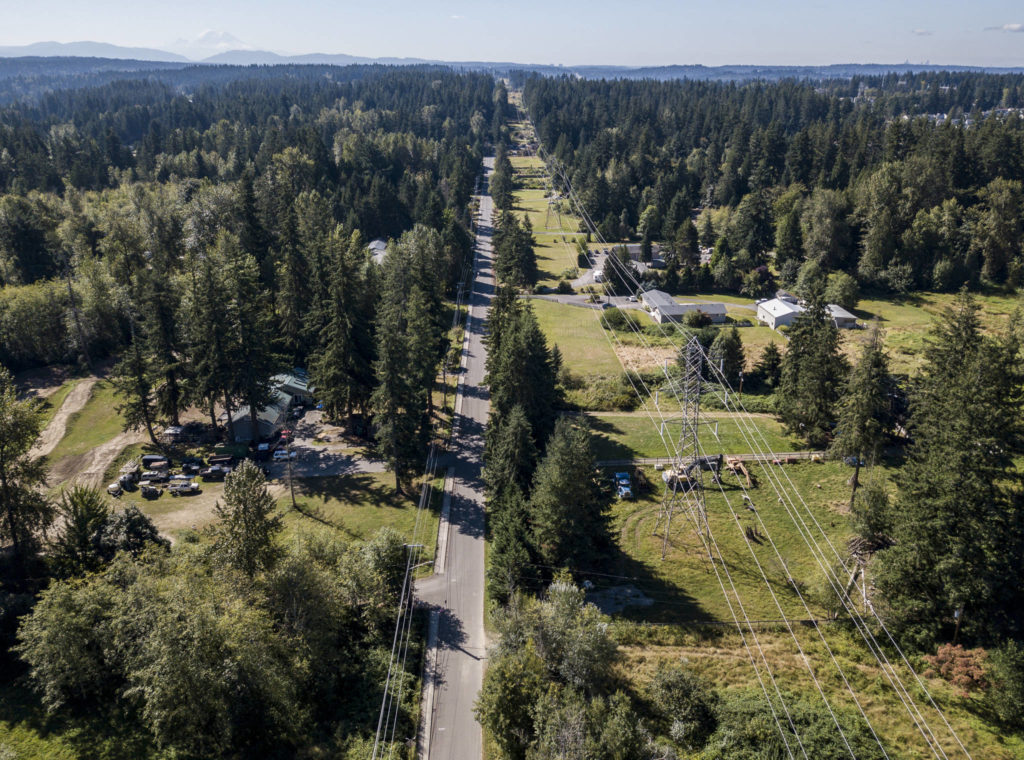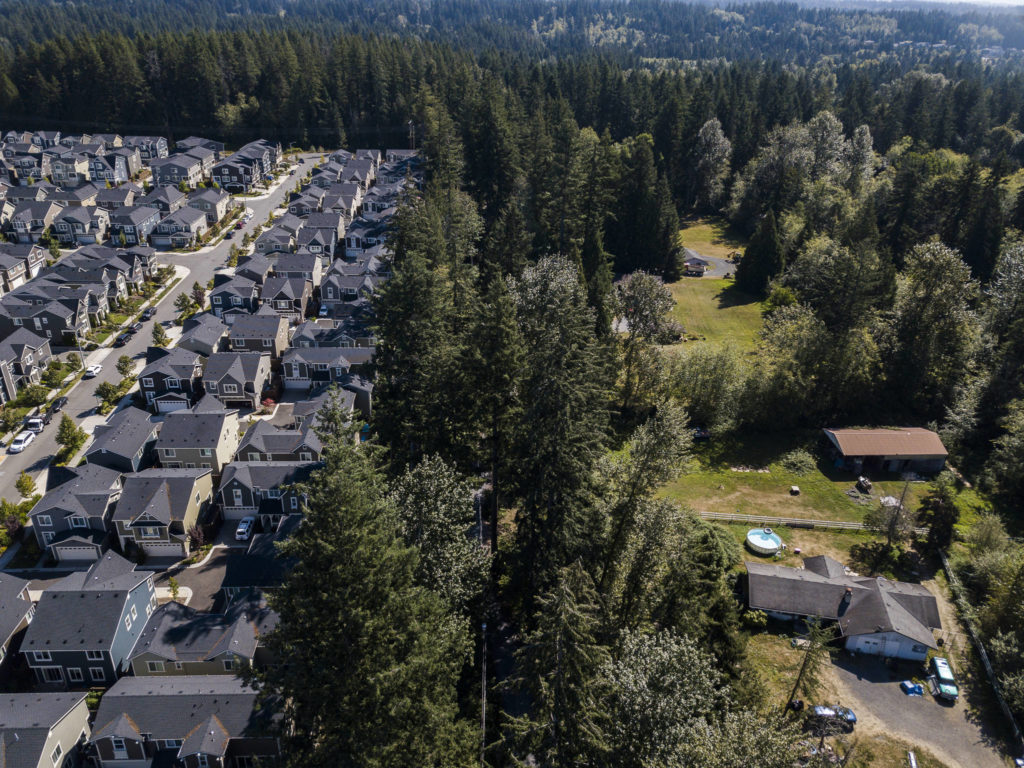BOTHELL — When Chuck Austin walks north from his home on 43rd Avenue, he crosses an invisible line that was drawn by Snohomish County policymakers more than a decade ago.
Behind him, horses and goats graze on expansive grassy lots, some strewn with tractors and heavy machinery. In front of him, a sign welcomes visitors to the Timber Creek neighborhood, where well-manicured lawns and neatly-trimmed hedges flank uniform rows of houses.
He’s suddenly in suburbia that has blossomed as developers have cashed in on the southern part of the county’s rapid population growth.
Austin and his neighbors have long been concerned for the fate of their rural enclave. It’s now partially surrounded by Timber Creek and similar subdivisions and slated for road improvements that they say would turn their quiet side of 43rd Avenue into a heavily-trafficked thoroughfare.
This fall, the residents of 43rd Street will again petition the county for a zoning change that would give them the option to sell their land to developers. Current rules allow just one home per 5 acres there, while nearby subdivisions can have a half-dozen homes per acre.
But Austin said he doesn’t expect to win the county’s approval easily.
The change will require pushing an urban boundary eastward, amending a set of documents — known as the county’s Comprehensive Plan — meant to guide development for years to come.
The deadline for property owners, organizations, cities and other agencies to propose amendments to the Comprehensive Plan is Oct. 30.
The county could field a range of applications, from minor proposals to change land-use designations to major requests to rearrange the lines that dictate how densely vast swaths of land can be developed.
The process won’t conclude until 2024, when the Snohomish County Council will adopt a new version of the plan that will reflect the next 20 years of population and unemployment growth across the county.
The undertaking, required periodically by state growth laws, will shed light on the priorities of municipalities, county leaders, environmentalists and players in the housing industry as the county’s census continues to rise.
The updated plan will likely address big questions, such as whether the county will anticipate more growth in Everett and other cities or in burgeoning south-county suburbs.
Population growth targets adopted during the last update in 2015 favored a greater share of growth in Everett, which council members reasoned has the zoning and infrastructure to absorb the impact.
But some in the housing industry have said that focusing on growth in Everett means risking that unincorporated parts of the county, such as the North Creek area where Austin lives, won’t be ready for new residents if they come.
“Historically, there has been pressure to over-allocate to Everett and Lynnwood. We just haven’t seen that population happen,” said Mike Pattison, Snohomish County manager for the Master Builders Association, which represents developers, builders, and other housing-affiliated companies in King County, too. “When we over-allocate to a city, such as Everett, it means we’re not properly planning infrastructure where population growth can be more realistically expected to happen.”
Cities accounted for a majority of the county’s annual population growth in 2017-18 and 2019-2020, according to Snohomish County’s principal demographer, Stephen Toy.
This year, population growth in unincorporated urban areas exceeded previously established targets 15 years ahead of schedule, Toy’s data show.
“One of the biggest failures that can come from this process is unrealistic planning,” Pattison said. “We’ve seen it before, and I’m concerned we’ll see it again.”
As the next version of the Comprehensive Plan begins to take shape, tensions could also flare between environmental advocates seeking to preserve land and developers looking for more open parcels.
In 2015, a council majority handed a victory to the home-building industry over conservationists and farmers by reducing the scope of a program intended to preserve agricultural land and forests.
Also in question is whether the county will consider an eastward expansion of its Southwest Urban Growth Area, which now includes the outskirts of Mill Creek and Bothell. No change has been formally proposed, but a 2019 county study explored the ramifications of moving the border east to Broadway Avenue, north to Cathcart and south to the county line.
Residents who wish to request amendments to the Comprehensive Plan will have to meet the October deadline without three key sets of information that will shape the process.
The county’s Buildable Lands Report, which evaluates the capacity for new development across the county, won’t be finalized until mid-2021. The council also will not adopt updated planning policies and population growth targets until next year.
But applicants will have the chance to modify their proposals as some of that new information becomes available, county planning officials say.
Once an application is submitted, it will first be vetted by county Planning and Development Services staff, who will make a recommendation on whether or not the council should advance the proposal.
Next year, the council will hold public hearings on the applications and decide whether each proposal should be referred for further study.
Proposals that pass the council’s muster initially are then evaluated for potential traffic and environmental impacts before they return to the council for final consideration in 2024.
The complex process is fraught with “bureaucratic inertia” and difficult to navigate for the average citizen, Austin said.
In 2018, the council shot down a proposal to rezone his lots and others along 43rd Avenue — in part because of the constraints of state growth laws and county policies. To expand urban zoning in one area, a corresponding contraction is required somewhere else.
So the residents suggested swapping zoning between their rural properties and urban land on the fringes of Everett and Granite Falls.
But a council majority feared the trade would pit residents against one another, because owners of the down-zoned land would lose the chance to profit from selling their properties to developers.
Now, Austin is working on another alternative.
His neighbors have grown tired of fighting for the zoning change, he said.
Wooden stakes with neon flags line the edge of his yard along 43rd Avenue.
The markers, recently placed by surveyors, will guide the future expansion of the roadway into an arterial that connects Maltby Road and 180th Street SE.
The project is slated for construction in 2022 and 2023, according to the county.
“It’s for the benefit of everybody else,” Austin said, “not for us.”
Rachel Riley: 425-339-3465; rriley@heraldnet.com. Twitter: @rachel_m_riley.
For more information on how to apply for an amendment to Snohomish County’s Comprehensive Plan, visit www.snohomishcountywa.gov/1669. Submittals are due Oct. 30.
Talk to us
> Give us your news tips.
> Send us a letter to the editor.
> More Herald contact information.
